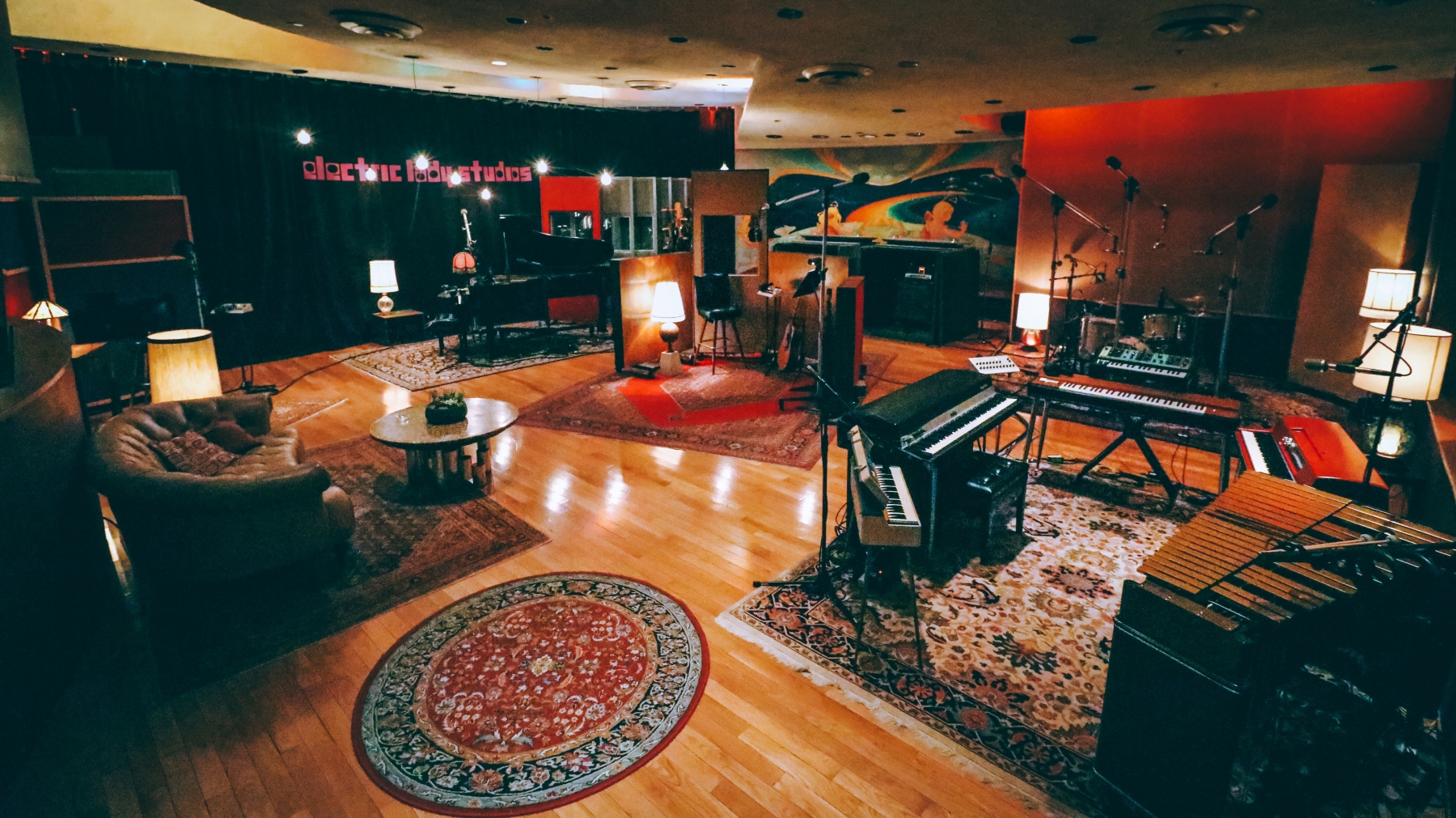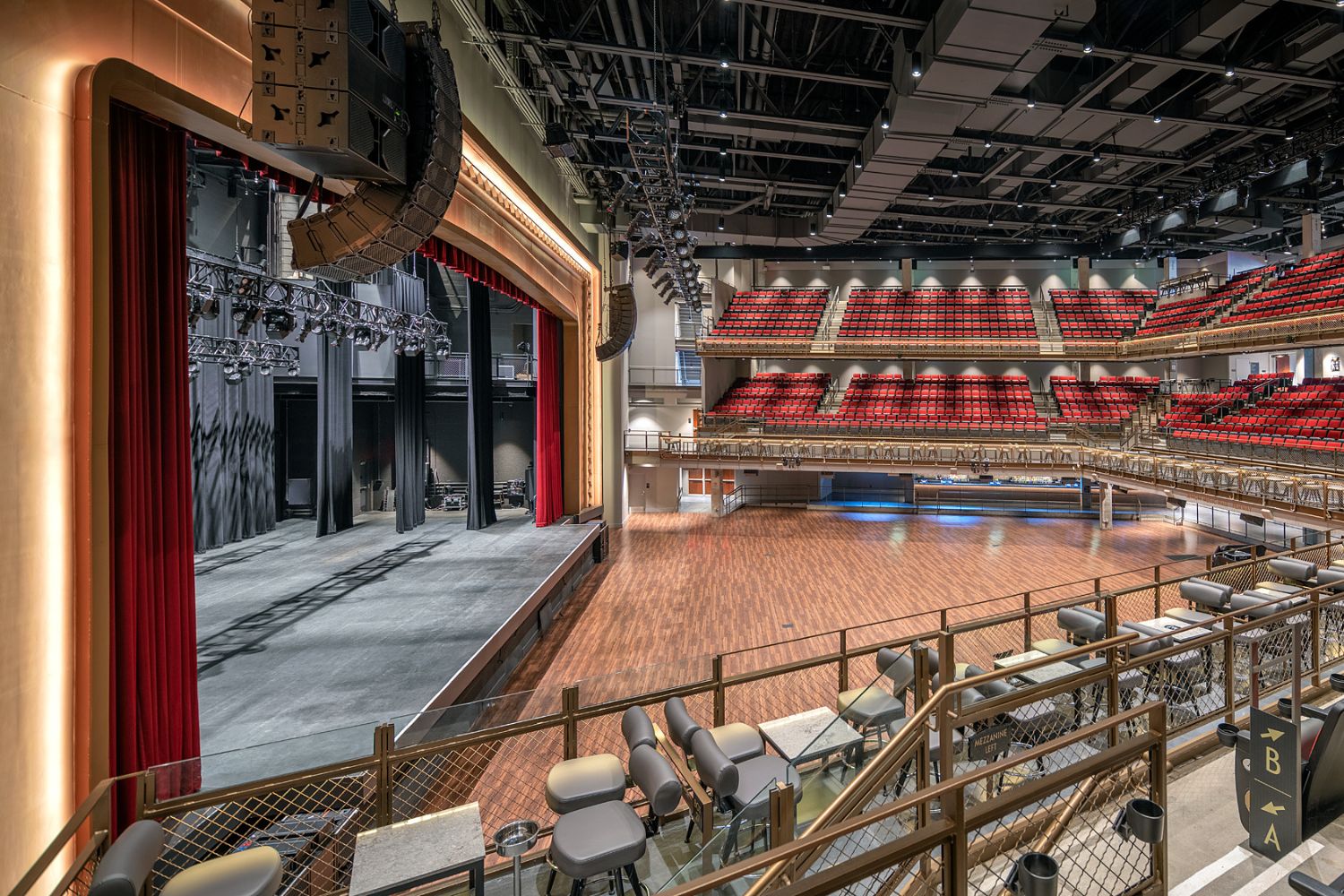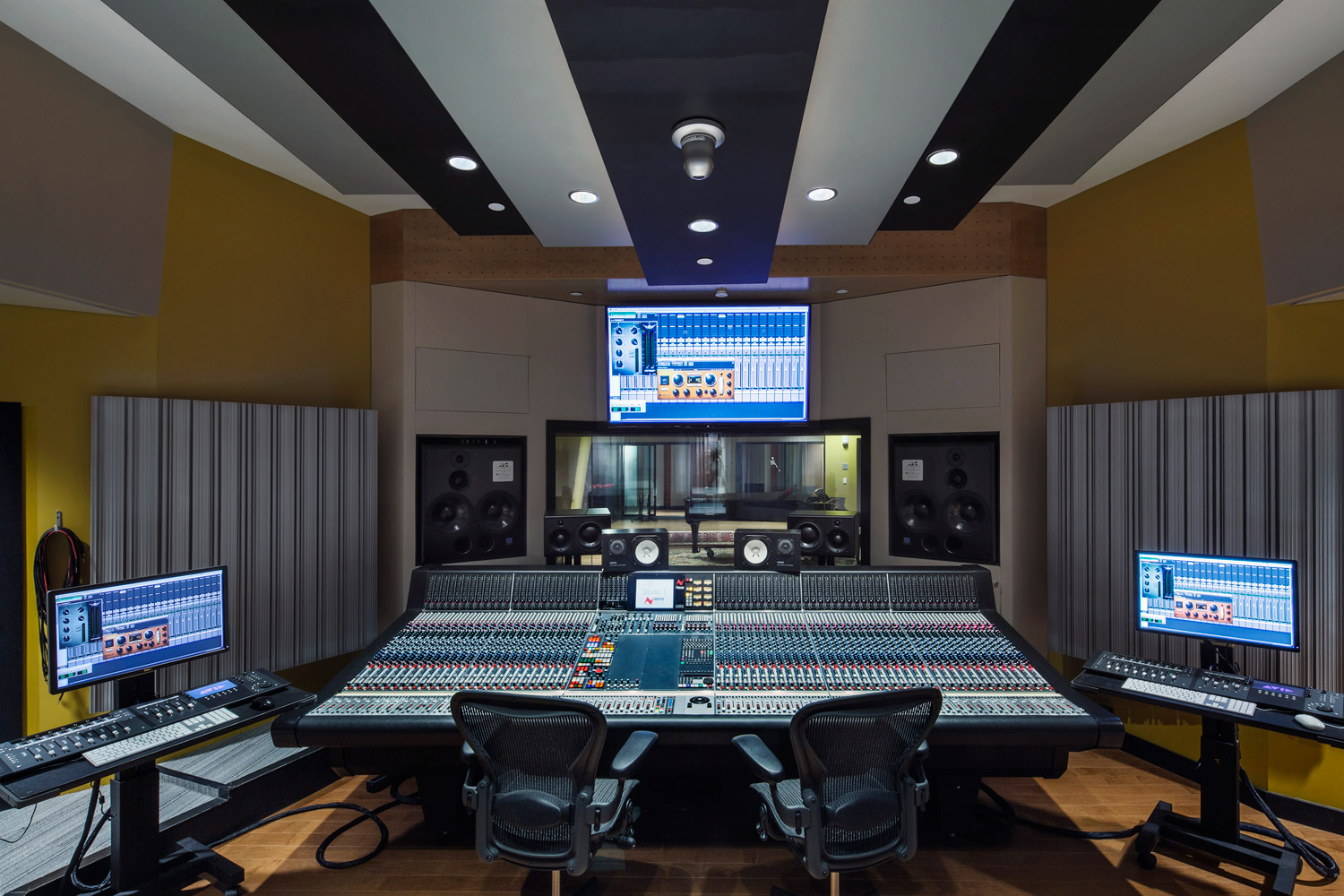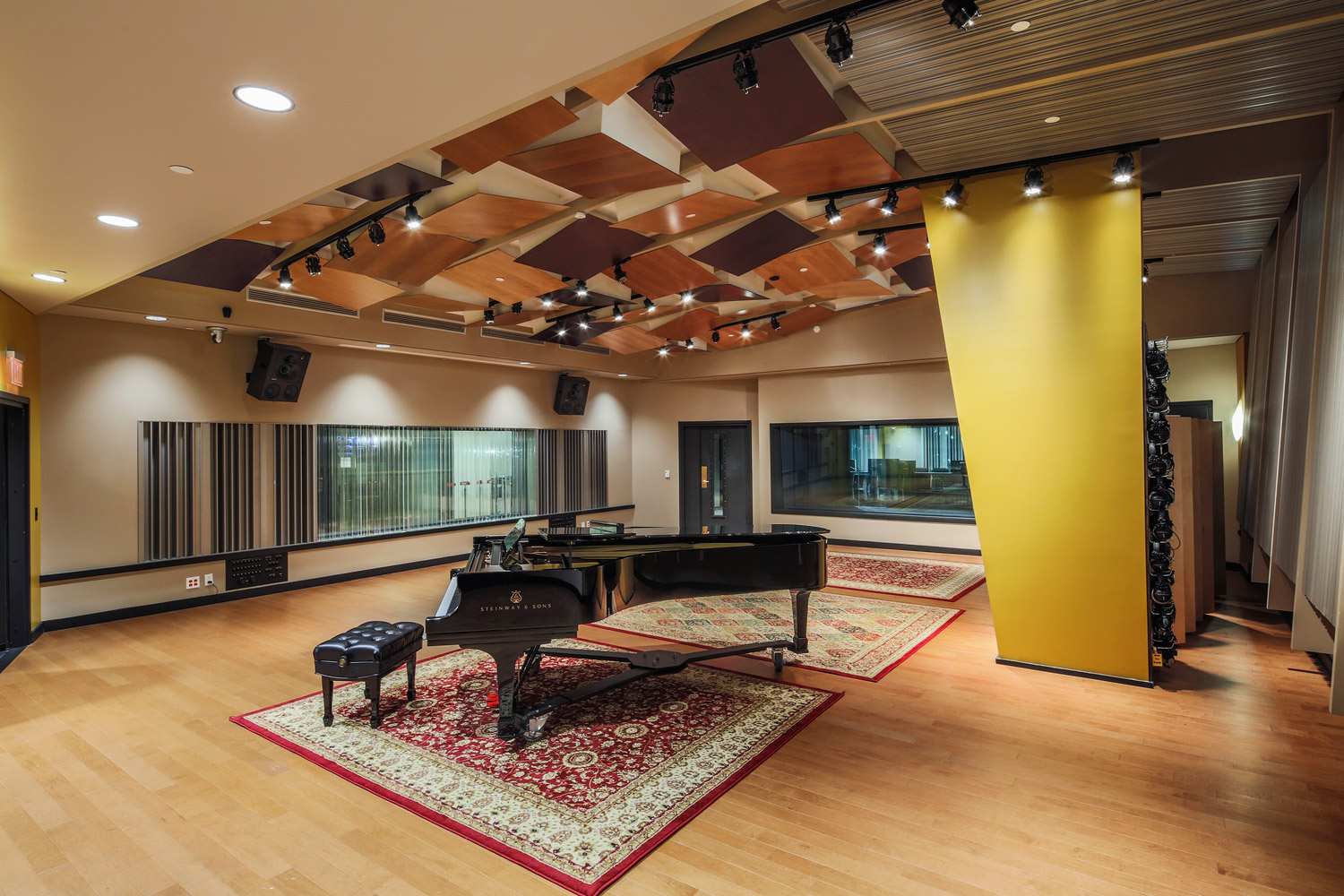Lessons from Electric Lady Studios Plus Seven Tips on Building Your Own

Illustration by Thomas Hedger
The ceiling of Electric Lady’s Studio A hangs over the live room like a spaceship, its twisting hull parting the psychedelic clouds and soaking up the sounds humans make below. Over the studio’s 55 years of operation, the ceiling’s porous plaster has absorbed sound waves from some of the most storied sessions of all time, and has shaped the sonic character of records by artists ranging from the studio’s original owner, Jimi Hendrix, to Stevie Wonder, the Rolling Stones, Patti Smith, D’Angelo, Lana Del Rey, and Taylor Swift.
John Storyk, the architect and acoustician who designed the studio back in 1969, admits that the distinctive low-frequency-absorbing acoustic properties of that ceiling was “partially an accident.” Electric Lady was his very first studio project, and he was following intuition, plus a basic understanding that the live room’s wooden floor shouldn’t be parallel to its ceiling. But he was also “just exploring a shape.”
“I was a huge fan of Antoni Gaudí, the Barcelona architect,” most famous for his whimsical and elaborate Sagrada Família basilica. “I was in love with curves and I was in love with those shapes,” he says. So he created the “twisted propeller shape” to float above that curved room in a studio full of curved surfaces.
“[Hendrix] wanted it to feel like his living room.”
—
He decided to use plaster to coat the ceiling shape, and to “put a lot of air in the plaster. And by troweling the plaster relatively thin on this frame, we made, without really knowing what we did, a membrane absorber. And to this day, it hasn’t changed.”
Because of its shape and the air-entrained plaster covering its surface, the ceiling is remarkably good at absorbing low frequencies. “That’s what gives that live room its very tight rock sound,” explains Storyk, who’s taught courses in studio design and acoustics(Opens in a new window) at Berklee for two decades. “Reverb time actually goes down as you go down in frequency. Whereas in many, many larger rooms, it goes up.”
While some might call the ceiling’s merger of form and function a kind of lucky break, launching Storyk into a sprawling career designing tens, then hundreds, then thousands of studios and music spaces around the world, he prefers a different word: “serendipity.” It’s as though the conditions for success—know-how, intuition, and a bit of chance—were simply waiting for the happy coincidence where they could collide.
Lift-Off
Since childhood, Storyk has been passionate about music and architecture. He grew up playing clarinet through high school, entered college as an architecture major as well as a member of the Princeton marching band, and then played in several blues bands.
In the months after he graduated, Storyk was playing in an up-and-coming band in New York City, and thinking he might make it as a musician. Then serendipity struck on a hot summer afternoon.
“I was waiting for an ice cream cone, picked up a newspaper, and saw an ad asking for carpenters to work for free on an experimental night club,” Storyk recalls. “And I thought, ‘That might be fun.’” So he called the number and signed on to help with the project, “under the condition that I could redesign it.” The club, called Cerebrum, lasted only nine months, but the mark it made on the city’s arts scene—aided by Storyk’s adventurous redesign—was indelible. “I get a call to talk about this club on an average of once a month.”
It was after seeing this club that Hendrix commissioned Storyk, just 22 at the time, to design a club in Greenwich Village. But Hendrix’s producer, Eddie Kramer, convinced him that what he needed instead was a studio. Rather than lose out on the commission, Storyk found himself suddenly in the studio design business. So he toured the city’s other recording facilities, drew on his architectural know-how (and the one college class in acoustics he’d taken), leaned on the expertise of Kramer and the engineer Phil Ramone, and managed to design one of the world’s most renowned recording spaces.
“It was famous before it was built,” says Storyk. “Before it opened, I had three more studios to design” based on the buzz around Electric Lady. From there, Storyk’s career achieved lift-off.

Electric Lady's Studio A, New York City
Courtesy of WSDG
Have You Ever Been (to Electric Lady)
What was it, exactly, that made Electric Lady Studios such an instant and enduring success? Storyk has some ideas. One reason, discussed above, is the low-frequency absorption in the studio’s live room, which has made it a go-to recording destination for generations of rock bands looking for a tight, uncluttered sound.
But there’s something else about the studio’s overall layout and aesthetic that’s always made it a welcoming space for artists. “It was conceived not as a commercial studio, but as a private personal studio,” Storyk explains. While it was “built to commercial specs,” the layout was geared toward artists working not just as session musicians in the live room, but also as active participants in the control room.
“With artists in mind, it was one of the first studios to have a very large control room. It was at a time when artists were becoming producers,” Storyk says. “If you look at the studios in the ’50s, the control rooms are really small.… Artists didn’t engineer their own music.” But as the recording industry evolved through the ’60s, artists took on a larger role in the technical execution of their musical vision—a tradition that’s continued into the present day, where producers and artists and engineers are all considered collaborators on the final product, or are all one-in-the-same person.
“Jimi wanted a really big control room. He wanted the control room to feel connected to the live room,” Storyk says. And Hendrix also wanted to infuse the space with his own personality: “He wanted it to feel like his living room. He wanted the lights to change colors—that’s where he sought me out, because that’s exactly what we had done at Cerebrum.”
Storyk says the studio still has that homey feel. “You go through the door, and it’s safe. That’s another reason why I think artists like it.”
Motherships and Satellites
In the decades that followed his success with Electric Lady, Storyk has gone on to design thousands of recording and performance facilities around the globe. These include personal studios for Bob Marley, Whitney Houston, Bruce Springsteen, and Jay-Z, and performance spaces such as MGM Music Hall at Fenway and Jazz at Lincoln Center. His firm, Walters-Storyk Design Group(Opens in a new window) (WSDG)—founded in 1987 with his wife, interior designer Beth Walters, as an extension of his solo practice—also designed Berklee’s own studio facilities at 160 Massachusetts Avenue(Opens in a new window).

The MGM Music Hall at Fenway, Boston
Courtesy of WSDG
During his career, he’s also seen the role of the studio in the entertainment industry shift, most notably beginning in the ’90s with the advent of professional-quality digital audio. He credits a 1994 Mix magazine article called “Motherships and Satellites,” written by Chris Stone, then partner and co-owner of New York City’s Record Plant studio, with laying out the clearest vision of what the new studio landscape would look like going forward. “He predicted that there would always be a very [small] number of motherships—large studios—and that there would be thousands and thousands of satellite studios, or home studios.”
Storyk points to Billie Eilish’s debut album, When We All Fall Asleep, Where Do We Go?, which she recorded primarily at home with her brother, Finneas, as an example of this dynamic. “They made the record in their bedroom,” he says, “but it most likely wasn’t mastered in her bedroom. Believe me, it was most certainly mastered in a very high-tech room.”

The control room of Berklee's Studio 1, Boston
Courtesy of WSDG
Building Your Satellite
Storyk stresses that even satellite studios operate on many of the same acoustic principles as do the motherships: “Listening to accurate audio in rooms is not going away.” So we asked him for his best advice on how musicians can build out their own studios:
“Orient your room correctly,” he says. Don’t position the listener in the center of the room, and “try to place your speakers in the room symmetrically with respect to boundaries.” Both of these steps help ensure the listener gets an accurate picture of the mix.
Use quality equipment. “Make sure you have one or two really good mics…a quiet interface…[and] one or two good preamps,” which may or may not be included in the interface.
Make the room quiet. This could involve setting up a smaller, separate booth for recording—or, if you’re recording in the same room where you’re mixing, “you’ve got to figure out how to make the room quiet.” This might involve housing equipment in a sound isolation rack, using an air conditioning system that’s “designed to be quiet,” or simply turning off the AC while you’re recording. The solutions will scale with your budget and your ambition.
“Introduce some targeted acoustic treatment.” Focus on the “first reflection position”—the first position where “your speaker is going to send sound off a close boundary…. That could be your console, it could be a close wall, it could be a ceiling.” For absorbing high and mid frequencies, Storyk says there are a number of effective products on the market. “They all say they’re better than the next, but that’s just marketing.”
“Manage your low-frequency response.” This is much more difficult in a personal studio without access to, say, the twisted propeller ceiling covered in air-entrained plaster that Electric Lady’s Studio A has. Low frequencies aren’t effectively absorbed by standard home acoustic treatments. However, Storyk says, “Do the best you can.” Focus on the room’s corners, since they have the most surface area and “low frequency is always going to build up on surfaces…. So even if you were to just put anything in the corner—maybe some foam, or tube traps, or anything, you’re going to be helping yourself.”
Ask for help. It’s always an option to seek some consulting on personal studio design. “It’s funny,” Storyk says, “people have no problem spending thousands of dollars on plug-ins, but they won’t get $500 worth of advice to get in the right position in your room.”
Make it fun yet functional. “Every studio has to have some kind of signature…. You’re supposed to have fun in these studios. They’re supposed to have your personality. On the other hand, I’ve always thought that there has to be a kind of neutrality in the studio.”

The Shames Family Scoring Stage, also known as Studio 1, at Berklee, Boston
Courtesy of WSDG
A Bit of Messiness
What this balance of form and functionality looks like will be specific to each studio’s user, but Storyk says a studio should be a “workshop” in which the “real personality” comes from the music made there.
Storyk says the most advanced designs WSDG works on use these same basic principles. “If I’ve done my job correctly, I’ve got that perfect sweet spot of acoustics, technology, geometry, form-following-function, but a little bit of messiness—a little bit of individuality.” It’s remarkable how close this description comes to the daily scene in Berklee’s 160 Massachusetts Avenue studios—and, of course, that’s anything but chance.
When Storyk finds himself on campus teaching, sometimes he’ll wander down to the facility he designed with WSDG to see what students are getting up to there. “It always makes me smile.”
“Within 30 minutes they’ve made their space their own. They’ve wiggled the stands and changed the rugs and opened up some of the variable acoustics,” he says. “I’m happiest when I’m watching Berklee students make music in the studios.”




